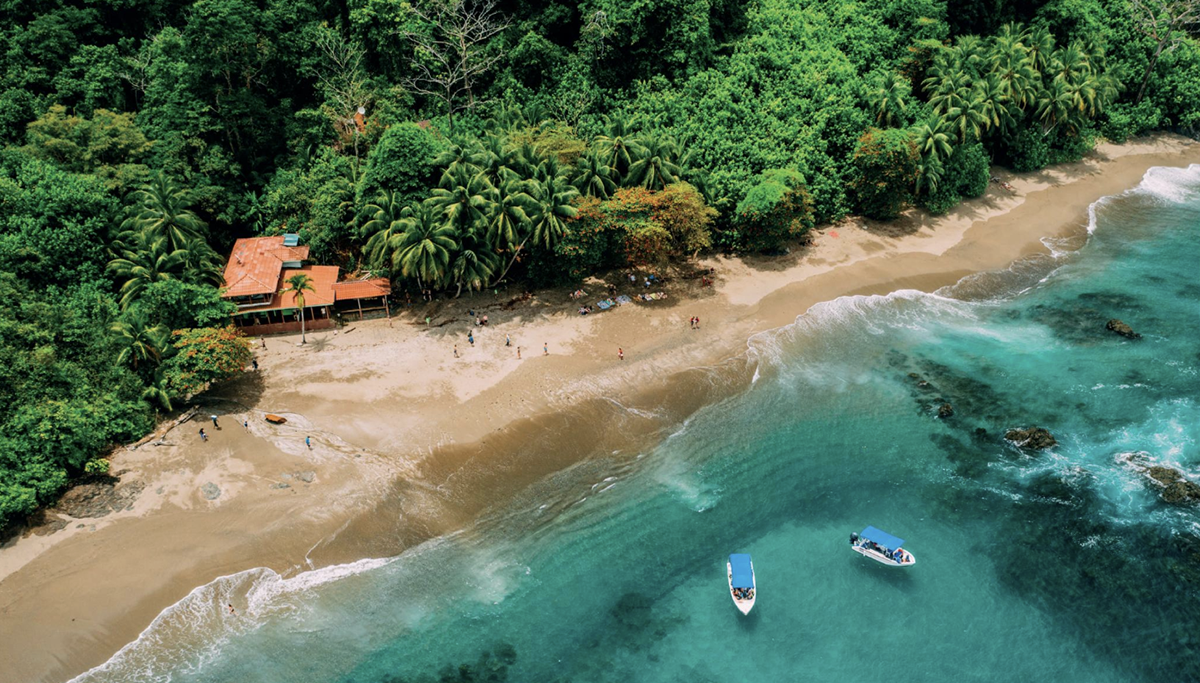
There are two very distinct sides to Costa Rica, with the western coast on the north Pacific Ocean and the eastern coast being part of the Caribbean Sea. The latter is often overlooked in favour of the Pacific side, which has more infrastructure and is more easily
accessible, but that is changing.
For better or worse, the Caribbean side is getting more attention since the start of the construction of a double highway from the capital, San Jose. But its laid-back vibe still prevails and I’m happy to say I can’t see that changing anytime soon.
The Costa Rican Caribbean covers over 200 miles of coastline with the port city of Limon dividing it between north and south. The main attraction to the North is Tortuguero National Park, famous as a nesting ground for Green Sea, Leatherback and Hawksbill turtles. However, we visited outside of the nesting season (July - Oct) and decided to head to the southern side of Limon province and to the tiny town of Puerto Viejo de Talamanca.
Still off the beaten path, rustic and rasta – we loved it. Puerto Viejo embodies the essence of Pura Vida, the Costa Rican philosophy of pure life, where relaxation and enjoyment take precedence. The town’s dusty streets are lined with murals depicting local legends and scenes from nature, while reggae bars and open-air cafes pulsate with energy day and night. It’s all bustling but very easy-going at the same time. The reggae beats and warm hospitality of the locals create an atmosphere that is uniquely Caribbean.
Things to do
Some of the best beaches can be found around here too, each with its own unique charm. Playa Cocles, with its golden sands and excellent surf breaks, attracts wave riders from around the world seeking the perfect barrel. Further south, Playa Chiquita attracts visitors with its tranquil coves and swaying palm trees, ideal for a lazy day of sunbathing or snorkelling in the crystal-clear waters.
For those craving adventure, the surrounding rainforest offers a playground of activities. Hiking or biking through the dense jungle trails of Cahuita National Park reveals a treasure trove of biodiversity, including howler monkeys, sloths, and vibrant birdlife.
Ticos (Costa Ricans in local dialect) are very industrious and you will find plenty of activities offered. You can have a look at online booking sites, but also check out the notice boards outside supermarkets to find surf lessons, kayaking tours, hiking tours, psychedelic ceremonies, rum tasting session etc. It’s the type of place where you can go without having booked a thing and still end up experiencing plenty.
Cuisine
The area’s melting pot of cultures is reflected in its cuisine, with influences ranging from Afro-Caribbean to indigenous flavours. Local sodas (small eateries) dish up mouthwatering plates of rice and beans, spicy chicken, and fresh seafood, while beachfront grills serve up grilled lobster and ceviche paired with hefty cocktails.
Where to stay
This area of Costa Rica isn’t renowned for four- or five-star luxury but you will be able to find a handful of places at very reasonable prices. I would suggest choosing somewhere south of Puerto Viejo, in the Gandoca National Reserve of Manzanillo to really get a feel for the natural area. We chose Almonds and Corals Resort – and fully immersed we were.
The lovely little wooden bungalows are in the rainforest and they only have netting for walls, meaning we were literally sleep-
ing in the rain forest, albeit with very comfy beds and luxury amenities. The howler monkeys were frequent visitors, and spotting sloths happened near daily.
It’s perfect for getting away from it all but be warned – given the ‘no wall’ situation, I wouldn’t suggest it for louder families or say, honeymooning couples. After a few days, we moved slightly north of Puerto Viejo to explore the area there. Our stay was in lovely traditional casita, of which there are many to choose from. The area is now booming with an influx of tourists and the options for accommodation is keeping pace.
When to go
Costa Rica’s weather is anything but straight forward and regions can be dramatically contrasting. The Caribbean Coast is tropical and generally hot, humid, and rainy year-round. February, March, September and October are the driest months.
Getting there and getting around
There are daily indirect flights from Gatwick, Heathrow and London City Airport. The total journey time is generally between 14 – 17 hours, including one stop over.
I would suggest booking a chauffeured car or a shuttle to get from the airport to the Caribbean coast. Prices are reasonable. A rental car is always great to get around with while travelling but the highway to Limon is still under construction and you may well end up stuck in traffic. Tuk-tuks are the favoured way to get around on the coast.
Good to know
You’ll be forgiven for thinking that Costa Rica is a cheaper country, on par with its neighbours but it isn’t necessarily so any more. Accommodation can still be moderately priced but a one-course meal for two in an average restaurant can easily add up to $40. One ‘average’ restaurant charged us $33 for a burger. One burger.
This can be mitigated by eating at sodas, where food is tasty and cheap. Groceries aren’t much cheaper than they are in the states.
La Paz Waterfalls Gardens
One of the loveliest experiences I had in Costa Rica was my visit to La Paz Waterfall Gardens, yet, it happened by chance. Somehow, I had not come across it during my extensive research before my travels. Located only one hour’s drive from the capital, San Jose, and on the way to the popular coastal area of Arenal, it’s a must-visit. It’s also easily combined with a visit to Paos volcano.
A garden is not the right description; it is a privately-owned eco-tourist park with well-kept hiking trails up to 3.5km long, taking you on journeys encountering five awe-inspiring waterfalls en route. Moreover, they wander through zoo-like exhibits (all the animals were rescued and deemed unable to be reintegrated into the wild), including the largest butterfly conservatory in the world and a huge hummingbird haven where you’ll be so close to these delicate little birds that you may even get a perfect photo of one in its hovering flight.
Close encounters won’t stop there as you meander through the spacious aviary and delve into a serpentarium and ranarium (frog sanctuary), observe wild cats during feeding sessions, and immerse yourself in the lush rainforest populated by monkeys and sloths. The flora of both the cloud and rainforest of this sanctuary won’t disappoint either with amazing greenery everywhere, and a stunning bromeliad collection and orchid paradise.
La Paz can be experienced as a half-day trip or tour but then you’ll miss the chance to step into a realm reminiscent of a fairy tale by staying at the opulent Peace Lodge. It consists of lavish villas boasting majestic valley panoramas, cozy fireplaces, private decks with jacuzzis, and expansive bathrooms adorned with waterfall showers. Guests enjoy complimentary access to the gardens. With its imaginative ambience, numerous pools, and interactive animal encounters (such as toucan and hummingbird feeding), this destination promises to delight children and families alike.
A visit to La Paz promises one of the most unforgettable tours of Costa Rica, making it a beloved destination in the Central Valley. All that’s left for me to say is visit this remarkable country that has so much to offer.




